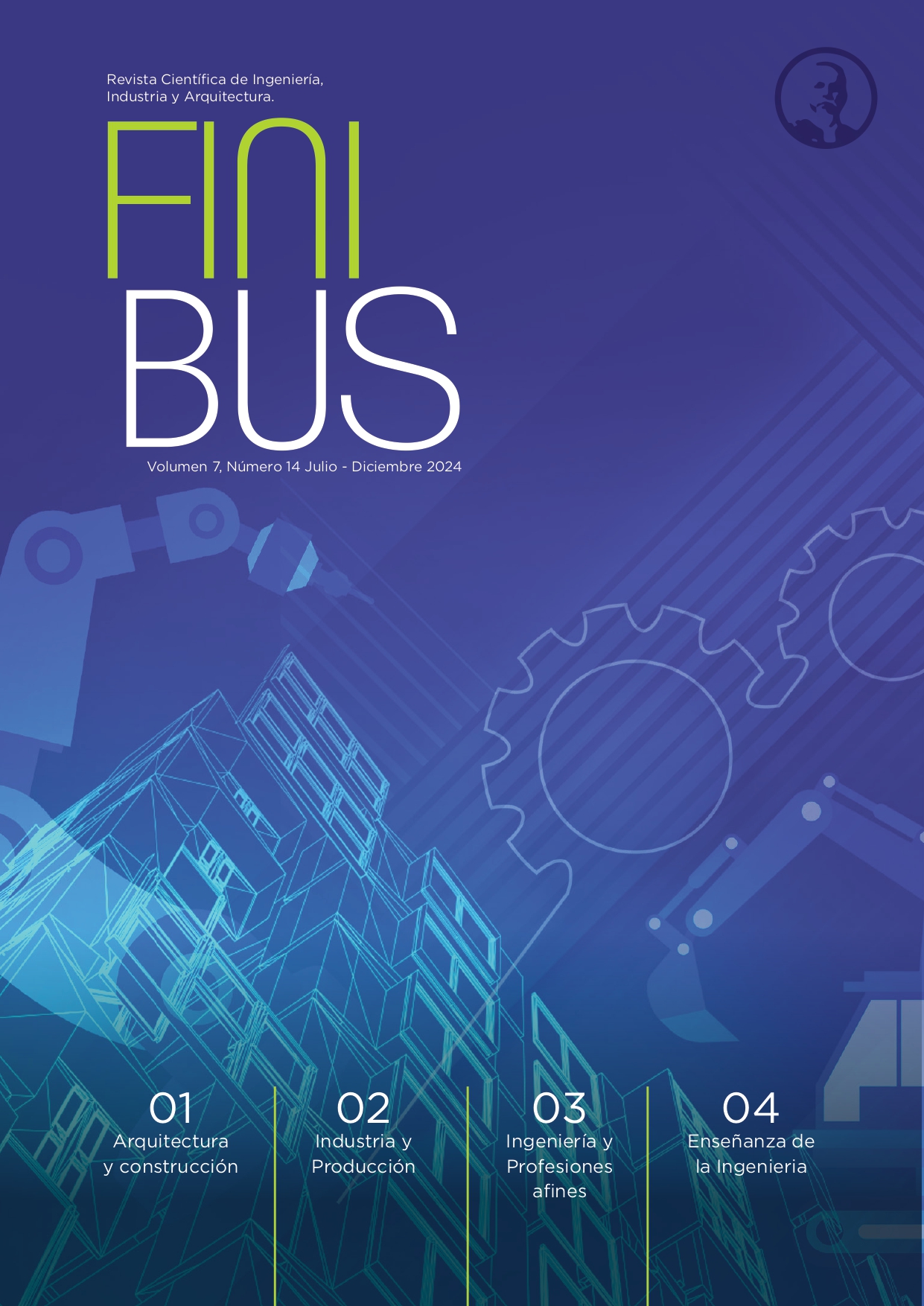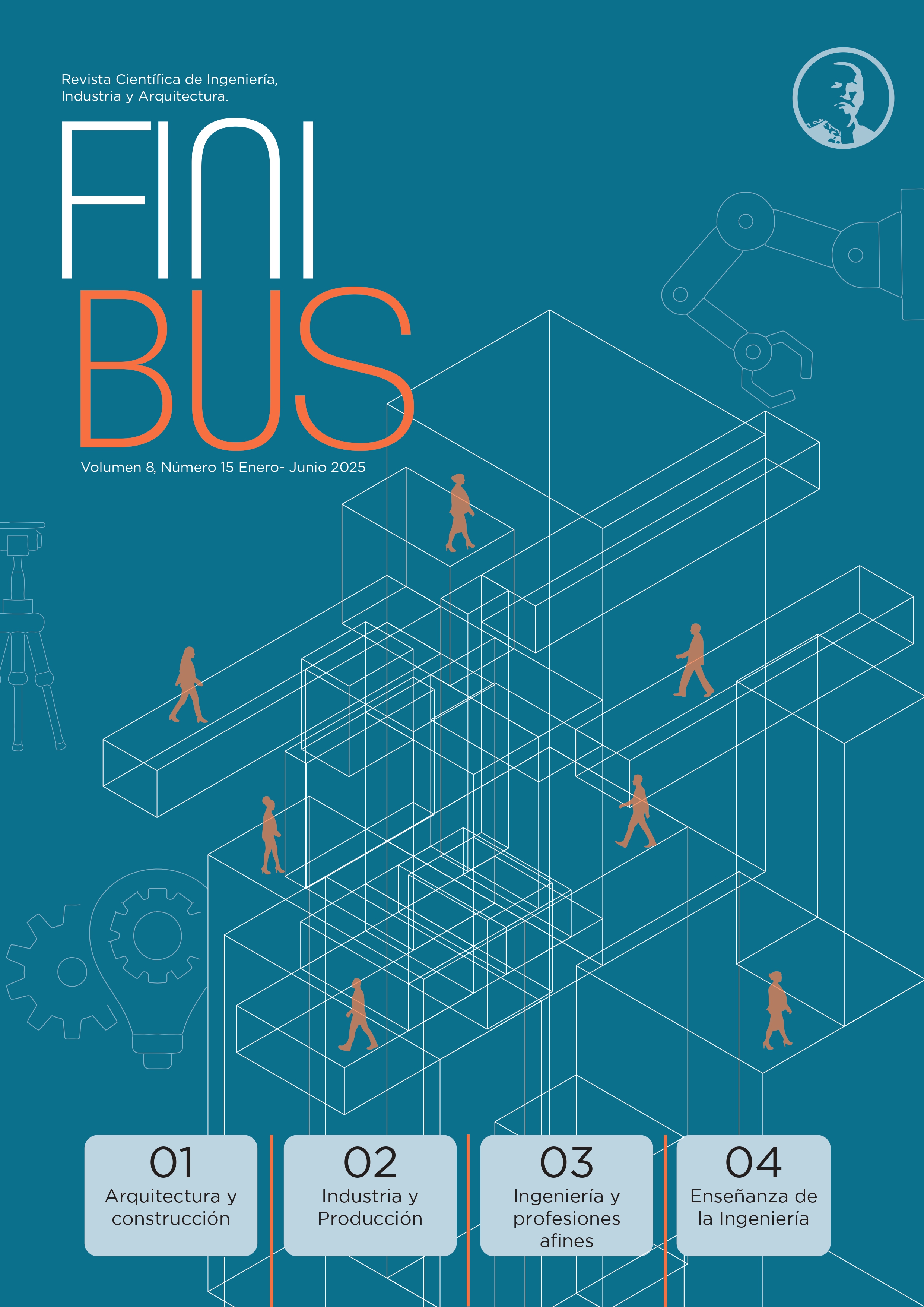Evaluation of the El Corazón Wastewater Treatment Plant – Pangua Canton, Ecuador.
Evaluation of the El Corazón Wastewater Treatment Plant – Pangua Canton, Ecuador.
DOI:
https://doi.org/10.56124/finibus.v7i14.015Keywords:
WWTP, Regulation, BOD, COD, INHOFF, Evaluation, FAFA.Abstract
In this experimental work the evaluation of a WWTP was carried out with the aim of determining whether the treated water discharged into the river complies with the regulations, for this purpose information was collected from the entire sector where the WWTP is currently located; data was collected on the influent and effluent flows, wastewater sampling was carried out at the entry and exit points to the WWTP for the analysis of the physical-chemical characteristics that were processed in a laboratory. Subsequently, a comparison was made with the water discharge parameters established by the TULSMA 2015, where it was verified that the Biochemical Oxygen Demand (BOD) and Chemical Oxygen Demand (COD) do not comply with current regulations, so it was decided to seek a proposal to improve the parameters. With the results obtained, we proceeded to carry out an analysis according to the actual degree of removal to recalculate its geometric properties in order to give a definitive diagnosis of the current state of the WWTP and it was found that they allow to improve the BOD and COD of the treated water before its final discharge, which includes: screening, sand trap, INHOFF tank, trickling filter, fafa, sludge drying bed and a disinfection plant. In addition, an operation and maintenance plan were implemented to efficiently fulfil the purpose for which the WWTP was designed.
Subsequently, a comparison was made with the water discharge parameters established by the TULSMA 2015, where it was verified that the Biochemical Oxygen Demand (BOD) and Chemical Oxygen Demand (COD) do not comply with current regulations, so it was decided to seek a proposal to improve the aforementioned parameters.
With the results obtained, we proceeded to carry out an analysis according to the actual degree of removal to recalculate its geometric properties in order to give a definitive diagnosis of the current state of the WWTP and it was found that they allow to improve the BOD and COD of the treated water before its final discharge, which includes: screening, sand trap, INHOFF tank, trickling filter, fafa, sludge drying bed and a disinfection plant. In addition, an operation and maintenance plan was implemented to efficiently fulfil the purpose for which the WWTP was designed.
Keywords:
Downloads
References
ACURED. (2021). Cantón Pangua – Ecuador. https://sites.google.com/site/provinciadecotopaxil/canton-pangua.
Baque, E. E. L., Cevallos, M. G. M., & Macías, B. A. C. (2024). Agua limpia y saneamiento, un vistazo al cumplimiento del objetivo de desarrollo Sostenible 6 en Jipijapa. Revista Científica Arbitrada Multidisciplinaria PENTACIENCIAS, 5(7), 400-409. https://doi.org/10.59169/pentaciencias.v5i7.965
Eddy, M. A., Tchobanoglous, G., Burton, F. L., & Cajigas, A. (1995). Ingeniería de aguas residuales: tratamiento, vertido y reutilización. ISBN: 978-84-481-1727-6
Echeverría, I., Escalante, C., Saavedra, O., Escalera, R., Heredia, G., & Montoya, R. (2021). Evaluación de una planta de tratamiento de aguas residuales municipales basada en lagunas de estabilización acopladas a un reactor anaerobio compartimentado. Investigación & Desarrollo, 21(1). https://doi.org/10.23881/idupbo.021.1-3i
González, M. R. M., & Calero, J. M. G. (2022). Evaluación de la planta de tratamiento de aguas residuales del cantón Jipijapa, Manabí. MQRInvestigar, 6(4), 925–943. https://doi.org/10.56048/mqr20225.6.4.2022.925-943
Indicadores ODS de agua, saneamiento e higiene en Ecuador. (2016). https://www.ecuadorencifras.gob.ec/documentos/web-inec/Bibliotecas/Libros/Diagnostico_ASH_pobreza_INEC_BM.pdf
Jouravlev, M. (2004). Recursos Naturales e Infraestructura, Los Serv. agua potable y Saneam. en el umbral del siglo XXI, vol. 74.
León. J., Godoy. S., & Miguez. R., (2023, 23 de junio). Vista de Evaluación de la calidad de las aguas residuales hospitalarias y diseño de una planta de tratamiento para un Hospital General. Imaginario Social. https://revista-imaginariosocial.com/index.php/es/article/view/130/260
Reynolds, A. (2002). Tratamiento de Aguas Residuales en Latinoamérica, Identificación Probl., no. Agua Latinoamérica
Moran, M. (2024, 26 enero). Agua y saneamiento - Desarrollo Sostenible. Desarrollo Sostenible. https://www.un.org/sustainabledevelopment/es/water-and-sanitation/
Navarro. S., (2012). Aguas residuales y agua potable. Introducción a la ingeniería civil.
Rojas. R. (2002). Gestión integral de tratamiento de aguas residuales, Sistemas de tratamiento de Aguas Residuales. http://docplayer.es/11882686-Conferencia-sistemas-de-tratamiento-de-aguas-residuales.html.
Rueda, F. V., Guarín, A. F. M., & Pramparo, L. M. (2019). Evaluación de un sistema de tratamiento de aguas residuales no domésticas para la remoción de carga orgánica en industria de bebidas no alcohólicas. Entre Ciencia E Ingenieria/Entre Ciencia E IngenieríA, 13(26), 17–26. https://doi.org/10.31908/19098367.1150
Portero. M. and Amat. V. (2017). Evaluación de la planta de tratamiento de aguas residuales de la ciudad de Babahoyo, Universidad Católica de Santiago de Guayaquil.
Toledo, A. (2002). El agua en México y el mundo. Gag. Ecológica, vol. 64.
TULSMA, (2015). Norma de Calidad Ambiental y de Descarga de Efluentes: RECURSO AGUA. Quito.
Published
How to Cite
Issue
Section
License
Copyright (c) 2024 Revista Científica y Arbitrada del Observatorio Territorial, Artes y Arquitectura: FINIBUS - ISSN: 2737-6451.

This work is licensed under a Creative Commons Attribution-NonCommercial-ShareAlike 4.0 International License.















